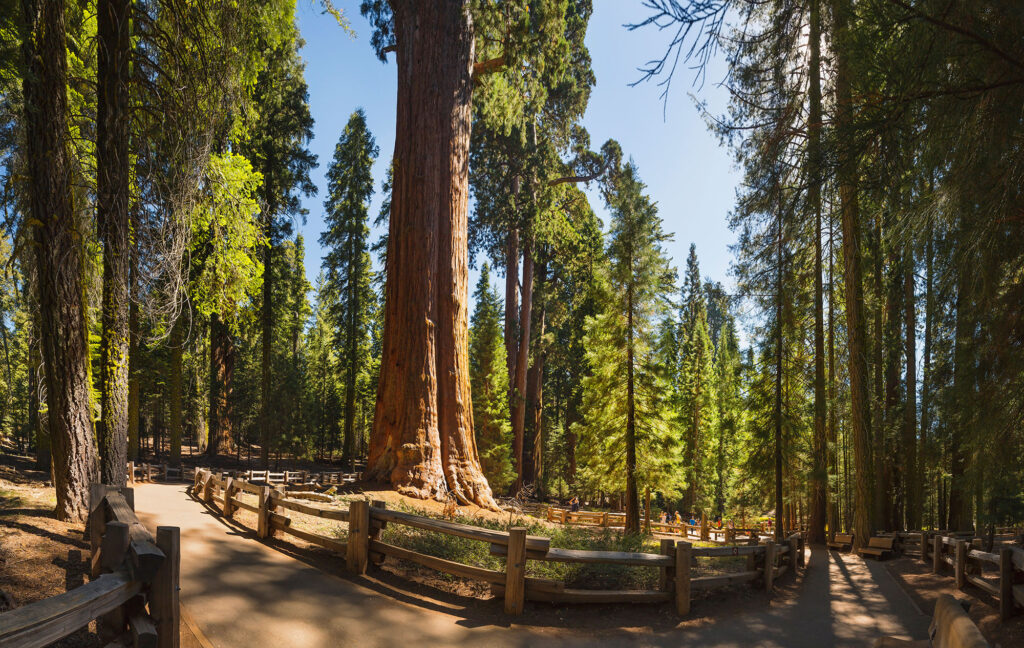
Celebrate National Arbor Day by Admiring These Absolutely Iconic Trees of the West
Plus, how to bring them into your own backyard.

Banu R/Getty
From the towering redwoods of California to the sacred koa trees of Hawaii, National Arbor Day is the perfect time to celebrate the incredible ecological power of trees across the West. These giants do more than just stand tall—they’re essential to the health of our landscapes, contributing to climate resilience, water conservation, and wildlife habitats. Whether you’re in the heart of the Pacific Northwest or the sun-soaked Southwest, trees play a critical role in maintaining our environment. In honor of National Arbor Day we’re spotlighting 10 iconic trees that embody the spirit of the West. Plus, we’re sharing practical tips on how you can bring one into your own garden to honor their legacy and support a more sustainable future. Ready to dig in and give a tree a home?
1. Coastal Redwood (Sequoia sempervirens) – California

GaryKavanagh/Getty Images
Standing as the tallest trees on Earth, coastal redwoods are not only a sight to behold but also champions in carbon sequestration. Their dense forests store more carbon per acre than any other forest type, playing a crucial role in mitigating climate change.
Best place to see: Redwood National and State Parks, Big Basin Redwoods State Park, Muir Woods National Monument
Garden Tip: While these giants thrive in the misty coastal regions of Northern California, they can be grown in spacious gardens with similar cool, moist climates. Ensure ample space and consistent moisture to accommodate their towering growth. Requires ample space, fog or consistent irrigation, and protection from extreme heat.
2. Giant Sequoia (Sequoiadendron giganteum) – Sierra Nevada, California

Jon Hicks/Getty Images
Renowned for their massive trunks and longevity, giant sequoias have witnessed millennia of history. Fossil records indicate their ancestors once flourished across broader regions, highlighting their ancient lineage.
Best place to see: Sequoia & Kings Canyon National Parks, Calaveras Big Trees State Park
Garden Tip: Needs full sun, well-drained soil, and plenty of space. Best suited for large properties with deep, slightly acidic soil. Their grandeur makes them a centerpiece in large landscapes.
3. Western Red Cedar (Thuja plicata) – Pacific Northwest

Dave Hutchison Photography/Getty Images
A cornerstone of Pacific Northwest forests, the western red cedar holds significant ecological and cultural value. Its wood has been traditionally used by Indigenous peoples for various purposes, from crafting canoes to constructing shelters.
Best place to see: Olympic National Park, North Cascades National Park, Mount Rainier National Park
Garden Tip: Thriving in moist, shaded environments, this tree is perfect for creating natural privacy screens. Its aromatic wood and lush foliage add sensory appeal to gardens.
4. Ponderosa Pine (Pinus ponderosa) – Western U.S.

Thomas J. Story
Recognized by its distinctive bark and widespread canopy, the ponderosa pine is a vital component of many Western forests. Beyond its timber value, it provides essential habitat for wildlife and contributes to the aesthetic and recreational value of natural landscapes.
Best place to see: Black Hills National Forest, Grand Canyon National Park, Deschutes National Forest
Garden Tip: Suited for drier climates, this pine prefers well-drained soils and ample sunlight. Adaptable to various elevations but needs space to accommodate its height, but a delightful addition to spacious gardens.
5. Koa (Acacia koa) – Hawaii

Xuefeng Zhao/Getty Images
Endemic to Hawaii, the koa tree is celebrated for its beautiful wood and cultural significance. Traditionally, it symbolizes strength and the warrior spirit, with the Hawaiian saying “e ola koa” translating to “live like a koa tree,” emphasizing resilience and longevity.
Best place to see: Haleakalā National Park, Mauna Kea Forest Reserve, Hawaii Volcanoes National Park
Garden Tip: Thriving in tropical climates, koa trees require well-drained volcanic or sandy soil and plenty of sunlight. Not suited for mainland U.S. gardens unless in a greenhouse.
6. Quaking Aspen (Populus tremuloides) – Rocky Mountains and Intermountain West

Photography by Deb Snelson/Getty Images
Known for their shimmering leaves that “quake” in the breeze, these aspens enhance air quality and provide habitats for various wildlife species. Their extensive root systems also play a role in soil stabilization.
Best place to see: Grand Teton National Park, Rocky Mountain National Park, Fishlake National Forest (home to Pando, the largest aspen clone)
Garden Tip: Aspens prefer cooler climates and can form beautiful groves in larger landscapes. Their seasonal color changes offer year-round visual interest. Plant in clusters for a natural grove effect and watch for suckering growth which should be pruned away.
7. Joshua Tree (Yucca brevifolia) – Mojave Desert

Thomas J. Story
Iconic to the Mojave Desert, Joshua trees are uniquely adapted to arid environments. They provide habitat for numerous desert species and have become symbols of resilience in harsh climates.
Best place to see: Joshua Tree National Park, Mojave National Preserve
Garden Tip: Ideal for xeriscaping, Requires sandy, well-draining soil and full sun. Can be slow-growing and is best suited for desert landscapes. Their distinctive appearance adds a dramatic focal point to desert-themed gardens.
8. Blue Spruce (Picea pungens) – Rocky Mountains

Thomas J. Story
With its striking blue-green needles, the blue spruce is not only aesthetically pleasing but also plays a role in forest ecosystems by providing habitat and contributing to biodiversity.
Best place to see: Rocky Mountain National Park, White River National Forest
Garden Tip: This spruce thrives in cooler climates with well-drained soil. Its conical shape and vibrant color make it a popular choice for ornamental planting. Needs space for its wide growth and should be watered deeply but infrequently.
9. Gambel Oak (Quercus gambelii) – Southwestern U.S.

GeoStock/Getty Images
Gambel oak woodlands are widely distributed in the southwestern United States, offering high-quality fuelwood and essential wildlife habitats.
Best place to see: Santa Fe National Forest, Grand Canyon National Park
Garden Tip: Adaptable to various soil types, Gambel oaks are suitable for naturalistic landscapes and can provide shade and shelter in garden settings. Ideal for wildlife-friendly landscapes.
10. Manzanita (Arctostaphylos spp.) – California and the Southwest

kellyvandellen/Getty Images
Manzanitas are renowned for their resilience and adaptability to California’s diverse landscapes. Their unique characteristics and ecological significance make them valuable components of local ecosystems.
Best place to see: Point Reyes National Seashore, Los Padres National Forest
Garden Tip: These shrubs thrive in well-drained, sandy soils and are perfect for drought-tolerant gardens. Their twisting branches and seasonal blooms offer year-round visual interest, but avoid excessive summer watering.
